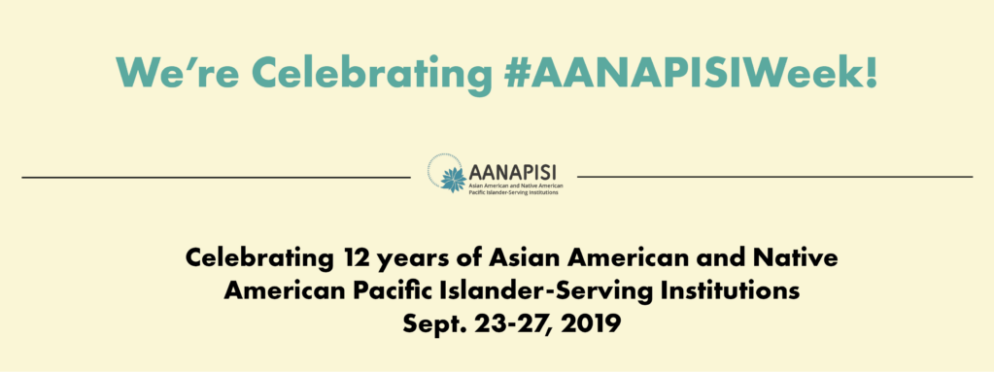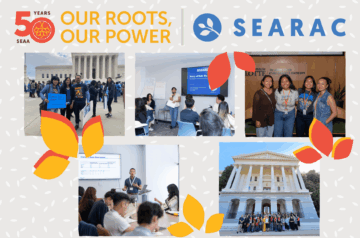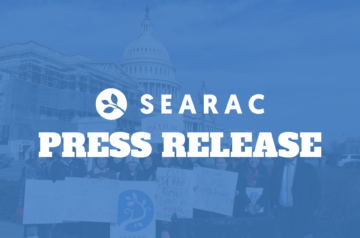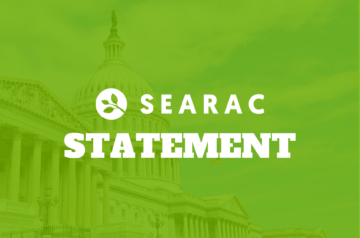Washington, DC – This week celebrates the 12th anniversary of the Asian American Native American Pacific Islander Serving Institution (AANAPISI) program. The AANAPISI program provides funding to increase Southeast Asian American (SEAA) and other Asian American and Pacific Islander (AAPI) students’ success in college, particularly low-income students. AANAPISIs typically use the funding for culturally responsive initiatives in student services, curricular and academic program development, and resource and research development.
AANAPISI history
The AANAPISI program was first authorized in 2007 through the College Cost Reduction and Access Act and incorporated into the Higher Education Act (HEA) in 2008. To this day, it remains the only HEA program dedicated to supporting Asian American and Native American Pacific Islander students.
One out of every three AAPI students attends one of the 161 AANAPISI institutions across the country. For SEAA students from low-income, refugee communities who are often the first in their families to attend college, accessing, affording, and completing higher education can be a challenge. For example, 58% of Cambodian, 53.9% of Hmong, 59.3% of Lao, and 49.1% of Vietnamese Americans have not attended college for any period of time, compared to 29.1% of all Asian students and 39.6% of white students.1 AANAPISIs have helped to close this gap by providing SEAA students with the resources needed to help navigate complex educational systems and a community to strengthen their SEAA identity.
SEARAC’s legacy
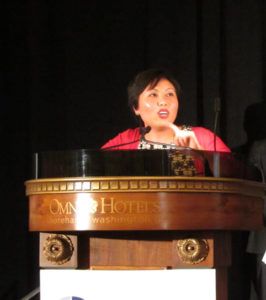
This is why SEARAC was among those at the national level leading the push for the creation of the AANAPISI program. By uplifting the unique needs and assets of SEAA students and the disparities they experienced as refugees, SEARAC provided a unique perspective to what was needed for true education equity. Moreover–and true to its mission–SEARAC led this effort in partnership with others.
“We did not do it alone,” emphasized Doua Thor, executive director of SEARAC from 2004 to 2013, on the importance of working in coalition. “Our voice was at the table championing issues, but it’s because we did it in combination with other communities who also experienced oppression and had similar goals for equity.”
Fighting for AANAPISIs today
With AAPIs being the fastest growing population in the US and a disproportionate number of SEAA students still struggling to succeed in higher education, the AANAPISI program must be fully equipped in order to support every student. Critically, this means Congress must distribute adequate funding to AANAPISIs and to other minority serving institutions (MSIs), including Historically Black Colleges and Universities, Hispanic Serving Institutions, Tribally Controlled Colleges and Universities, and Alaska Native and Native Hawaiian-Serving Institutions.
However, the mandatory funding for AANAPISIs and other MSIs expires on September 30–just days from today–and Congress has yet to pass a reauthorization of these programs that are critical to the success of underserved students of color and low-income students. While the House of Representatives approved a two-year renewal of MSI funding last week through the Fostering Undergraduate Talent by Unlocking Resources for Education (FUTURE) Act, the Senate is refusing to take up the bill.
“Congress must not allow funding for AANAPISIs to lapse,” said Quyen Dinh, executive director of SEARAC. “We are disappointed with the Senate’s attempt to block funding for this program that advances equity in higher education for Southeast Asian American students and all students of color. We call on our senators to take up the FUTURE Act immediately to ensure that it is signed into law by September 30. We also stand with the civil rights community to demand that any further reauthorization of the Higher Education Act comprehensively protects students’ civil rights. Our communities and our students deserve no less than true education justice.”

